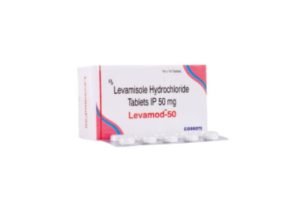
Ceftriaxone + Tazobactam Overview:
Description:
Ceftriaxone + Tazobactam is a combination antibiotic consisting of ceftriaxone, a third-generation cephalosporin, and tazobactam, a beta-lactamase inhibitor. Ceftriaxone works by inhibiting bacterial cell wall synthesis, while tazobactam inhibits beta-lactamase enzymes produced by resistant bacteria, enhancing the effectiveness of ceftriaxone against beta-lactamase-producing organisms. This combination is particularly useful for treating infections caused by drug-resistant bacteria.
Available Forms & Strengths:
- Injection (IV):
- Ceftriaxone 1g + Tazobactam 125mg
- Ceftriaxone 1g + Tazobactam 200mg
- Ceftriaxone 2g + Tazobactam 250mg
Uses:
- Respiratory tract infections (e.g., hospital-acquired pneumonia, community-acquired pneumonia)
- Complicated urinary tract infections (UTIs)
- Intra-abdominal infections
- Skin and soft tissue infections
- Sepsis
- Bacterial meningitis (off-label, in some cases of resistant bacteria)
Side Effects:
- Nausea and vomiting
- Diarrhea
- Injection site reactions (pain, swelling)
- Rash or itching
- Increased liver enzymes
- Rare: Pseudomembranous colitis
Dosage:
- Typical adult dose: 1 to 2 g of ceftriaxone with the corresponding tazobactam dose, administered once or twice daily depending on the infection.
- The exact dose varies with the severity of infection and renal function.
Contraindications:
- Hypersensitivity to ceftriaxone, tazobactam, other cephalosporins, or beta-lactams.
- Neonates (infants under 28 days): Risk of bilirubin displacement leading to jaundice or kernicterus, especially in those receiving calcium-containing solutions.
Warnings:
- Hypersensitivity Reactions: Anaphylaxis or severe allergic reactions, especially in patients with a history of penicillin allergy.
- Clostridium difficile-associated diarrhea: Antibiotic use can lead to severe colitis.
- Calcium Precipitation: Ceftriaxone may precipitate with calcium in the lungs or kidneys, leading to complications, especially in neonates.
- Renal Impairment: Adjust dosage in patients with impaired kidney function.
- Superinfections: Prolonged use may lead to overgrowth of non-susceptible organisms, including fungi.
Special Instructions:
- Do not mix with calcium-containing solutions. Administer separately to avoid precipitates.
- Monitor kidney and liver function during long-term treatment.
- Always reconstitute the powder correctly and administer via IV infusion over the recommended time.
- Complete the entire course of antibiotics even if symptoms improve early to prevent resistance.
- Monitor for signs of allergic reactions, particularly in patients with a history of penicillin allergy.







